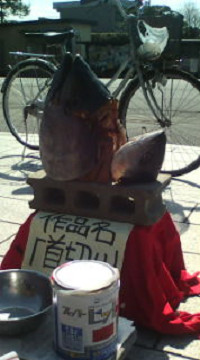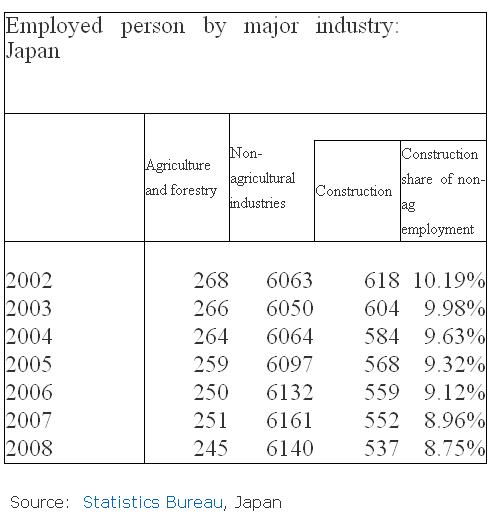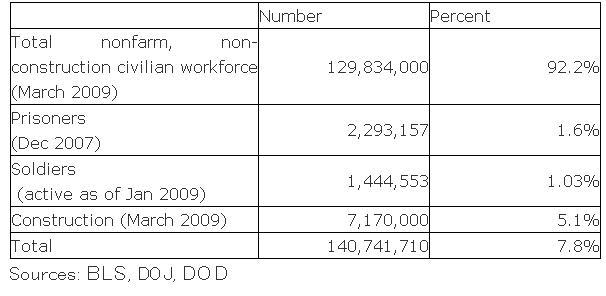According to the Asahi, Kyoto University has issued a final warning demanding the dispersion of two men who have been camping out on the university main campus for a month. The pair formed their own union, called Union Extasy in English, to demand that their employment contracts be extended past their five year maximum. Thirty supporters, presumably members of the regular Kyoto University workers’ unions who have taken a position supporting improved conditions for campus part-timers, stood with them in solidarity.
The crowd scene could be a sign that the moment when the university forcibly removes the two from campus could end up becoming a publicized confrontation, similar to the one seen at the Shinagawa Keihin Hotel earlier this year, when police forced the staff of the bankrupt hotel from keeping the business open against the wishes of the owners. The event was apparently crowded with both protesters and journalists, making for an enormous spectacle, itself something of a replay of the “temporary employee village” set up in Hibiya Park over the new year holiday.
The two men, both in their late 30s, were doing data entry work for the agricultural faculty for monthly wages of around 120,000 yen, according to an earlier report. I find it just amazing that they were both able to live on that much (20,000 yen/month apartments, probably a very meager diet).
A JANJAN citizen reporter who interviewed the strikers notes that of Kyoto University’s 5,400-strong staff, 2,600 are part-timers, 85% of them female.
The employment rules for university part-timers are on paper intended to promote full-time, indefinite employment. Universities are basically required to prioritize permanent hires and can only hire contract employees on a provisional basis. However, in typical lukewarm fashion, when the Kyoto U and other national universities were officially branches of the education ministry, Kyoto University signed non-permanent employees to 364-day contracts, theoretically terminated employment on March 31, “re-hired” the same people the next day for another term, and repeated this process for years. Exploiting this loophole had the added benefit that none of the “new employees” needed to be given raises from the previous year.
But when the national universities were corporatized in 2004, the rules changed. The ministry decided to close this loophole and instead, for employees hired on or after fiscal 2005, limited contract employment to a maximum five years, after which universities were barred from hiring the same person as a contract worker. In other words, the schools must now choose to either take them on as a full-time employee (and provide all the job security and regular pay raises that entails) or hire someone else on a contract basis. Kyoto University apparently decided to go with the cheaper option at the time, and now five years later they have this protest on their hands along with all the creative artwork that’s come with it:
The decision for these older men to protest may have been in part due to their stated desire to raise the wage levels for this type of work. The assumption for years has been that this so-called “part-time” work is the province of housewives in need of extra cash, so the fact that they are men and not basically dependents of their spouses breaks with this stereotype. And of course, this also implies the question, what difference does it make whether men or women are expected to fill the position?
The university Director involved in the labor negotiations has argued that non-permanent employees have no “operational responsibility” — in other words, they are not expected to become Company Men and accept forced transfers or other duties that would come with permanent status. But in an era of decreased job opportunities to the point that men are competing for jobs that were traditionally seen as women’s work, these old divisions seem pretty irrelevant.
Despite the clearly brazen and confrontational tactics taken by the union, asking to change this arbitrary rule seems pretty reasonable. Saga University has apparently already done so. They apparently are not asking to be taken on as full timers, just for a raise and the chance to stay on.
As often happens when observing events in Japan, I get the feeling that viewed from the outside this issue seems simple – just allow indefinite part-time employment, and leave the decision of who to promote to full-time status up to the university managers. I can understand the university’s reluctance to take on indefinite staff – in these uncertain economic times and an era of declining population, I wouldn’t want to promise someone a job for the next 30 years either. But there is strong resistance in Japan to a system of at-will employment, and the US model that I am used to is certainly not an obvious path to prosperity.
In addition, the various parties have widely divergent agendas. I would imagine the politics of a university employees union must be quite intense indeed, and they along with the bureaucrats have a vested interest in maintaining the seishain system of stable employment and regular pay increases, at the expense of everyone else. In addition, other actors such as the Japan Communist Party have a somewhat extreme vision of maintaining employment, as seen in their platform of forcing companies to use their “internal reserves” to maintain employment.
(Photos courtesy JANJAN)
Video of the “kubikiri” fish head exhibit:




